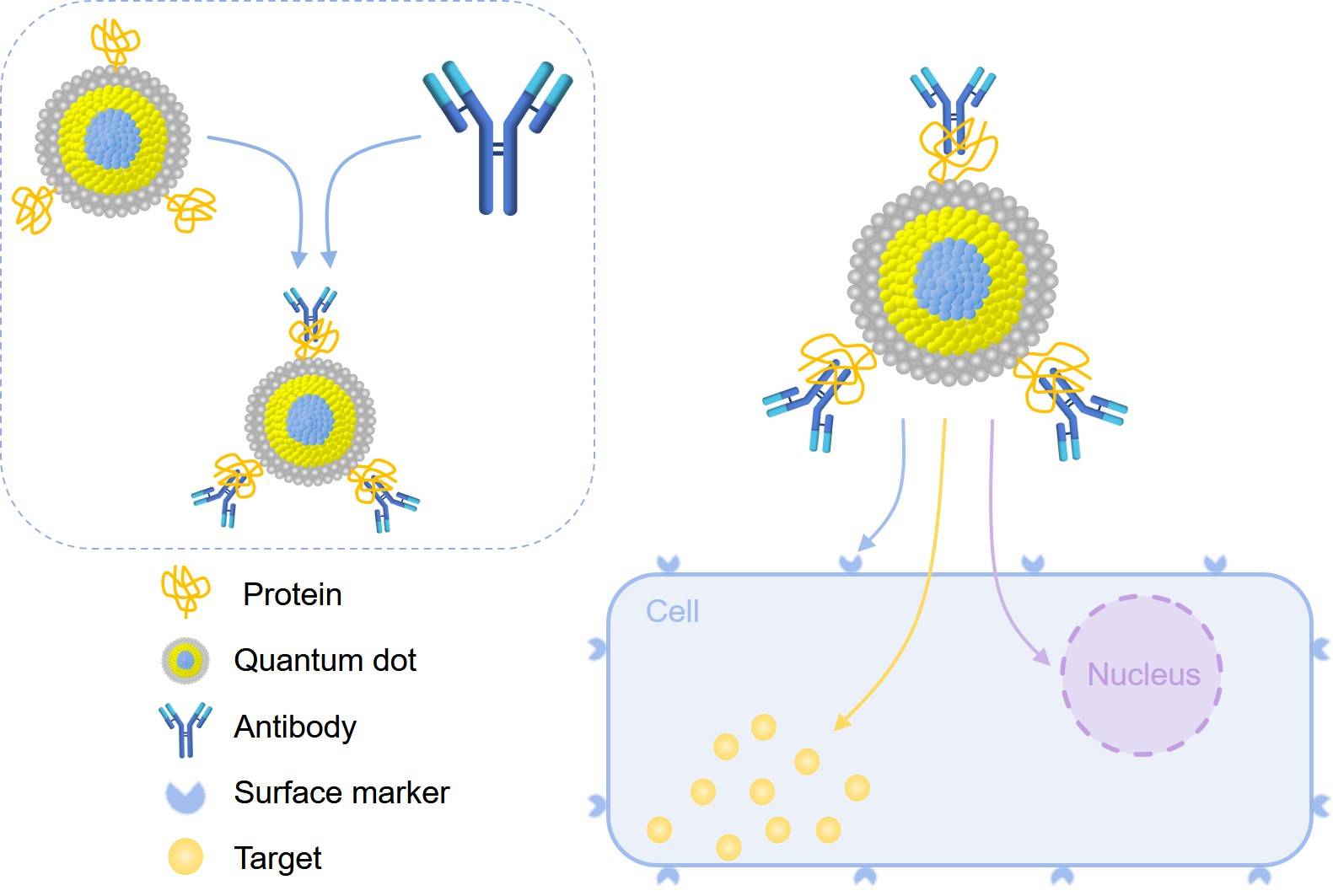Bioconjugation for In Vivo Imaging
Bioconjugation became an essential tool for the visualization of biological processes within the field of imaging. Creative Biolabs pride ourselves on our expertise in bioconjugation for imaging in vivo, with our advanced technologies and dedicated team, Creative Biolabs offers a wide range of cutting-edge solutions that fully meet customer needs.
Bioconjugated Nanoparticles for In Vivo Imaging
Bioconjugated nanoparticles have a wide range of applications for in vivo imaging due to their unique optical, electrical and magnetic properties. These properties may help to speed up signal transmission, increase signal strength, facilitate the reading of signals and have an important role in a variety of imaging methods.
We've made it possible to conjugate nanoparticles to biologically affinity ligands, such as proteins and nucleotides. If you have difficulties with highly sensitive imaging including optical imaging, magnetic resonance imaging (MRI), positron emission tomography (PET), and computed tomography (CT), we can help you with nanoparticle probes.
 Fig.1 Bioconjugated nanoparticles as probes.
Fig.1 Bioconjugated nanoparticles as probes.
Imaging Method
 Optical Imaging
Optical Imaging
Fluorescence emission is a key tool for molecular imaging, opening up new avenues of measuring and understanding biological processes at both macro and micro levels. Semiconductor quantum dots are an important fluorescent probe. By changing the size, chemical composition and internal strain of semiconductor nanocrystals, we can adjust the fluorescence spectra of nanoparticles between the visible and near infrared to help you solve the problem of wavelength-specific detection.
Raman-active nanoprobes have attracted lots of attention lately for their use in biomedical applications. With our specialized team, we can enhance the Raman scattering signal of metal nanoparticles by surface-enhanced Raman scattering (SERS). This ultra-high sensitivity nanoparticle probe facilitates imaging by amplification of Raman signals on the scale of 1014 to 1015.
 Imaging Method
Imaging Method
MRI signals, unlike optical methods like fluorescence or Raman spectroscopy, are not restricted by tissue scattering and may examine locations deep into the body. However, because of the limited sensitivity of MRI, imaging requires targeted contrast agent. To solve this problem, we provide magnetic nanoparticle conjugate service which can help you well.
 PET&CT
PET&CT
PET and CT are two commonly used imaging methods for disease diagnosis. PET uses radioactive tracers that are delivered into the body and then quantified and imaged in three dimensions with a scanner. By offering a highly engineered structure for the attachment of radionuclides and targeting moieties for molecular imaging, nanoparticles have the potential to considerably enhance the applicability of PET. CT is a bioimaging technology that generates a three-dimensional image from a succession of X-ray images taken from various angles. Our tailored probes, created by conjugation nanoparticles with antibodies and other biomolecules, may suit a wide range of molecular imaging requirements. In addition, this probe combines PET and CT imaging characteristics and can be used for multimodality imaging.
Imaging in Vivo Services of Bioconjugation at Creative Biolabs
![]()
Creative Biolabs offers the most advanced and comprehensive customized bioconjugated nanoparticles services available today. We work to amplify your success in a highly collaborative manner. If you are interested in our services, please do not hesitate to contact us for detailed information.
